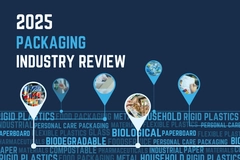Do Not Ignore the Draft Labelling Regulations!

Most notable is the unprecedented proposed regulation on a long list of non-essential foodstuffs, which prohibits advertising to children and imposes a near "Do-not-buy-me" label similar to tobacco labelling requirements.
17/08/07 There are key changes in the Department of Health (DOH) final draft of the Regulations Relating to the Labelling and Advertising of Foodstuffs which, if adopted, will have major implications for the food industry. The draft regulations were published last month and the deadline for comment and submissions from industry is 30 October2007.
Most notable is the unprecedented proposed regulation on a long list of non-essential foodstuffs, which prohibits advertising to children and imposes a near "Do-not-buy-me" label similar to tobacco labelling requirements.
The DOH, for instance, wants to outlaw the use of any cartoon-type character or puppet (like Father Christmas, all characters on a snack or breakfast cereal packaging) that may encourage the consumption of such foodstuff, among other stringent requirements. The marketing and advertising campaigns of many products will have to be overhauled.
There are also numerous other changes from the previous draft publicised in 2002 and industry needs to note that guidelines referred to in the draft are not included in the original document and were not on the DOH website at the time of going to press.
The guidelines are essential to the correct understanding of the regulations and should be obtained from the DOH.
A group of food consultants, Consulting in Food Labelling (CFL), has highlighted the following notable changes:
* The list of definitions has been extensively expanded, but there are also important omissions
* More products will require laboratory analysis.
* The section on prohibited statements has been extensively expanded.
* Negative claims have been clarified and narrowed down.
* The implications around QUIDs (quantitative ingredient declarations) are substantial.
* Origin and degree of hydrogenation of fats and oils and presence of trans fats have to be declared.
* The regulation clearly places responsibility on the manufacturer to prove due diligence by way of a HACCP-based food safety and quality management system AND batch-specific allergen testing, in order to make claims that foods are allergen-free.
* Provisions for the use of "100% pure" or "pure" claims."
* The non-essential foods list is new and such foods will have toinclude one of the following statements on the main panel of the label in bold letters: "Use in moderation only since excessive consumption on a regular basis may lead to an unhealthy increase in weight/obesity" or "Regular consumption not recommended for a healthy diet".
* For the purposes of claims, mandatory nutrition information now makes reference to MDR's (Minimum Daily Requirements) rather than RDA's (Recommended Daily Allowances) and the age group has been broadened to individuals of 4 years and older.
* Only prescribed wording will be allowed for nutrient content claims, which will prohibit many claims including "rich in ...", "source of...", "with added .", which may be more understandable to consumers.
* New categories have been added to the nutrient content claim section (omega -3 and a range of carotenoids).
* The section on GI/GL has been extended.
* A new logo has been added to be allowed for use when 'natural' colourants or degrees of colourants are used.
* The requirements for enhanced-function claims and the required dossier have been tightened up.
* The section on disease risk reduction has been expanded to include further claims provided certain criteria are met and certain mandatory wording is used when making the claims.
* Only limited strains of probiotics are approved for use in claims.
* Reference amounts with regard to portions/serving sizes are prescribed in order to make claims per serving size. However, many of the serving sizes are not practical.











